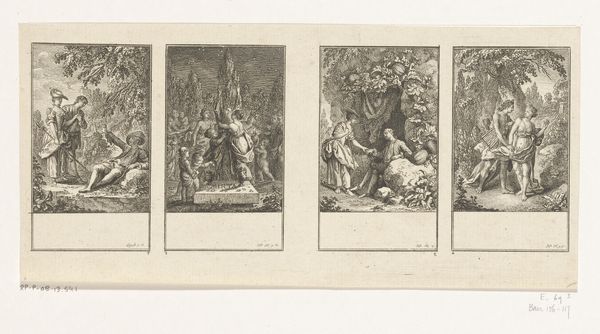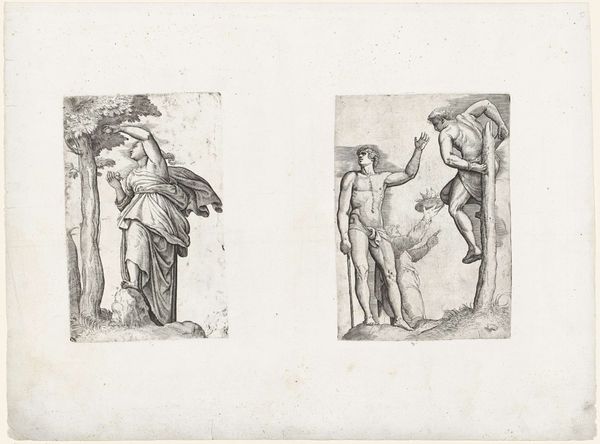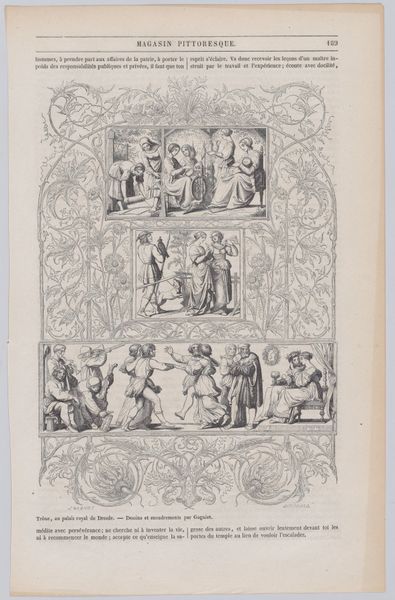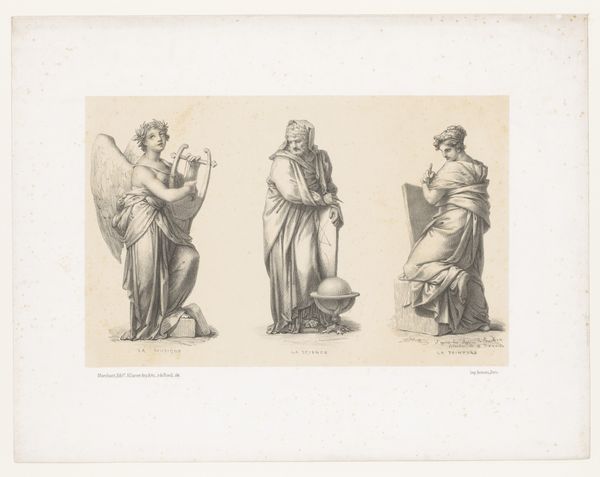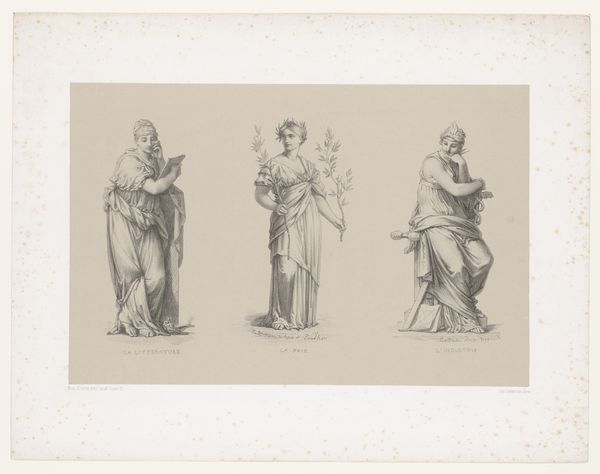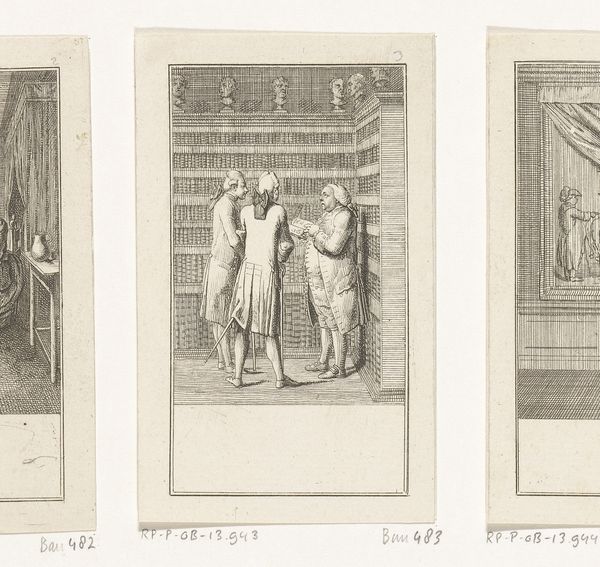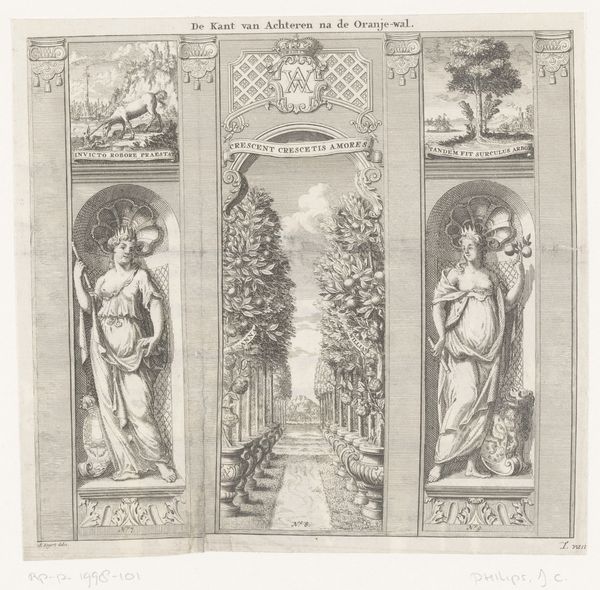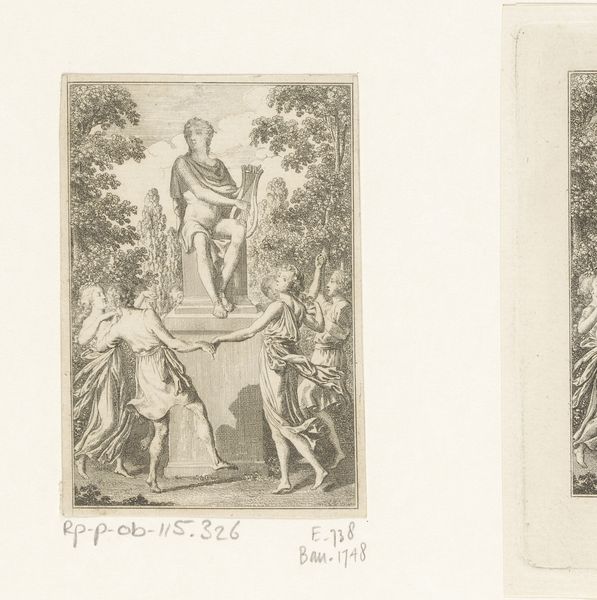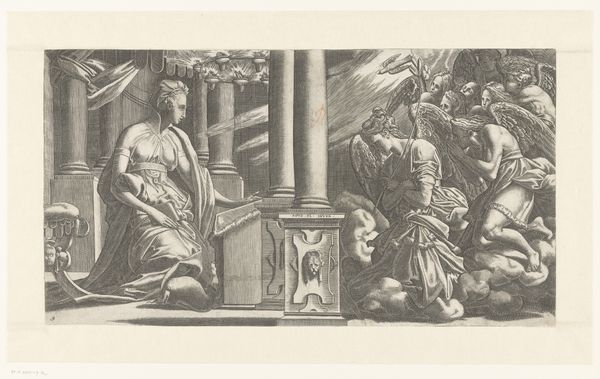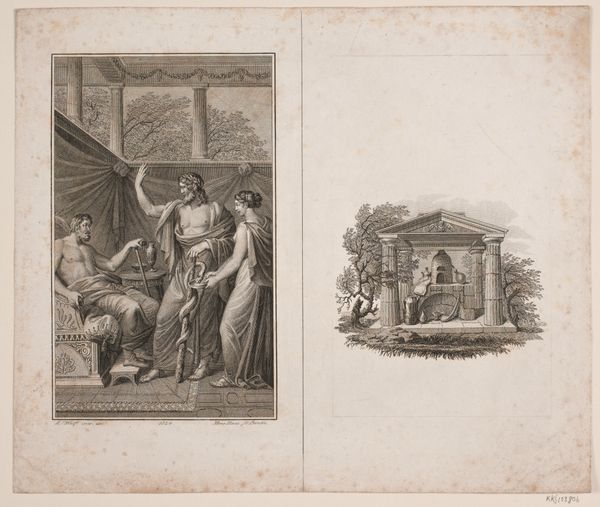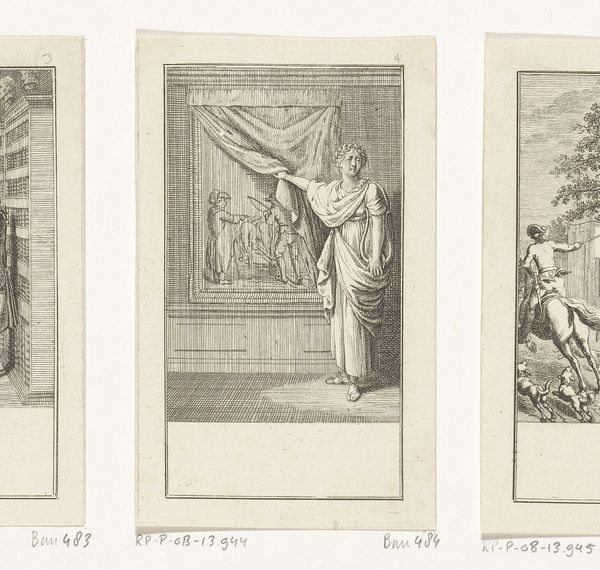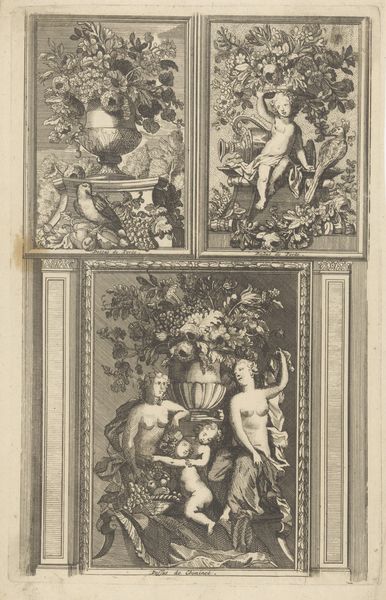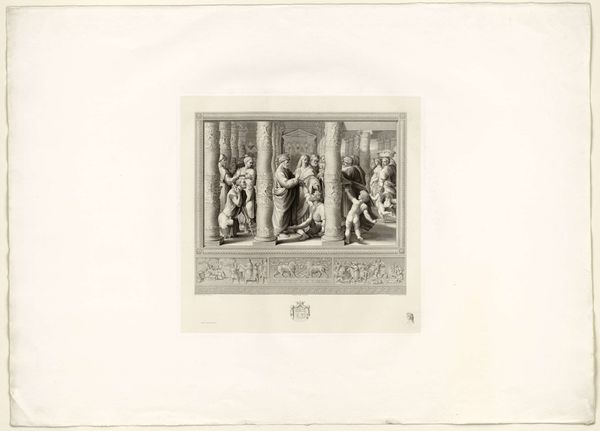
print, engraving
#
portrait
#
neoclacissism
#
allegory
# print
#
classical-realism
#
figuration
#
academic-art
#
engraving
Dimensions: height 314 mm, width 394 mm
Copyright: Rijks Museum: Open Domain
Curator: Julien-Léopold Boilly’s print, "Vier Muzen," produced sometime between 1813 and 1874, depicts the four muses, each in a separate panel. I find myself drawn to the precision of the engraving, and to the subtle interplay of light and shadow achieved with such minimal material. Editor: Immediately, the arrangement strikes me. Separating the Muses in individual vertical panels and pairing them with floating cupids isolates and emphasizes their individual representation and their role within the social order. Curator: Indeed. The use of engraving here is also worth noting. This reproductive medium democratized classical allegories, allowing broader audiences to consume and learn from idealized representations of the arts and sciences. These prints were often integrated into educational contexts or interior designs as markers of cultivated taste. Editor: Yes, and the specific Muses that are depicted, their individual symbols, are telling: Erato with her lyre representing lyric poetry, Urania representing astronomy, Polymnia, muse of rhetoric, and finally, Psyche, soul mate of Eros, embodying human connection through love. Why these four? What kind of ideal of creative expression is Boilly presenting here? Curator: That is an interesting question. Perhaps Boilly's choices are revealing a particular contemporary intellectual preoccupation. The printing processes surely aided in disseminating his chosen figures—further embedding certain historical and aesthetic value systems within the collective visual consciousness. Editor: Precisely. Look at the careful, classical garb that covers but also exposes some part of each muse's body, and that erotic energy is so central to western aesthetic tradition. These aesthetic and academic approaches solidify cultural ideals by defining not only what art can be but for whom it can be produced and consumed. Curator: A point well taken! Reflecting on the physicality of the engraved lines that give the figures definition is what really makes the artistic construction so interesting. How a copper plate, inked, pressed, yields a visual representation is simply compelling to me. Editor: Yes, to consider who held the burin to make this kind of allegorical presentation accessible. Thank you for bringing my attention to it.
Comments
No comments
Be the first to comment and join the conversation on the ultimate creative platform.
